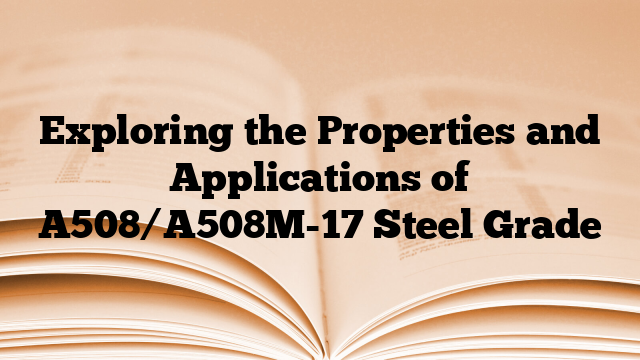The A508/A508M-17 steel grade is a low alloy, high strength steel that is primarily used in the fabrication of pressure vessels and other structural components in the nuclear power industry. This steel grade is specified by the ASTM A508/A508M standard.
The chemical composition of A508/A508M-17 steel grade consists of carbon (C), manganese (Mn), phosphorus (P), sulfur (S), silicon (Si), nickel (Ni), chromium (Cr), molybdenum (Mo), vanadium (V), and copper (Cu). The exact composition may vary slightly depending on the manufacturer, but typically the steel contains approximately 0.20-0.23% carbon, 0.70-1.00% manganese, 0.025% phosphorus, 0.025% sulfur, 0.15-0.35% silicon, 1.45-1.75% nickel, 0.4-0.6% chromium, 0.45-0.65% molybdenum, 0.02-0.080% vanadium, and 0.025% copper.
The mechanical properties of A508/A508M-17 steel grade are crucial for its applications. It has a minimum tensile strength of 690 MPa (100 ksi) and a minimum yield strength of 485 MPa (70 ksi). The steel also has a minimum elongation of 22% and a minimum reduction in area of 50%. These mechanical properties make A508/A508M-17 steel grade highly suitable for use in high-pressure and high-temperature environments.
The A508/A508M-17 steel grade is widely used in the nuclear power industry for its excellent combination of strength, toughness, and weldability. It is commonly used in the construction of reactor pressure vessels, containment buildings, steam generators, and other critical components. The steel grade has been extensively researched and tested to ensure its suitability for these demanding applications.
In summary, A508/A508M-17 steel grade is a low alloy, high strength steel that is primarily used in the nuclear power industry. Its chemical composition and mechanical properties make it well-suited for pressure vessel and structural applications in high-pressure and high-temperature environments. The steel grade is specified by the ASTM A508/A508M standard.

